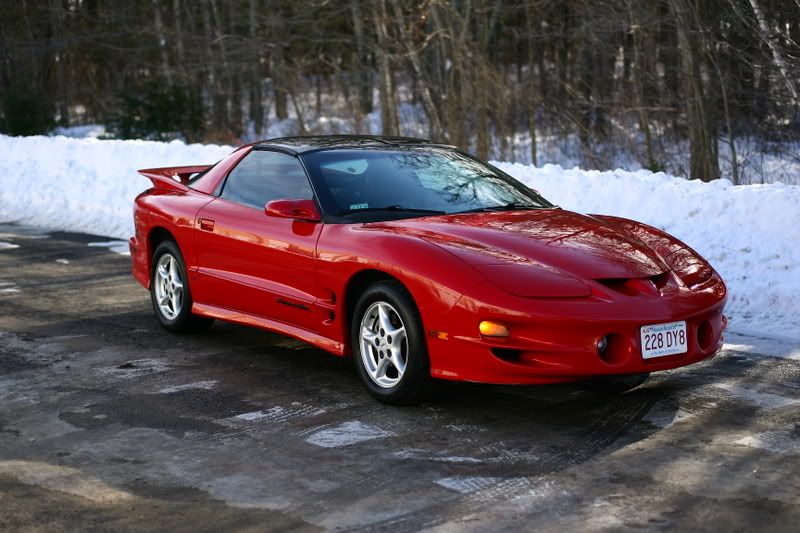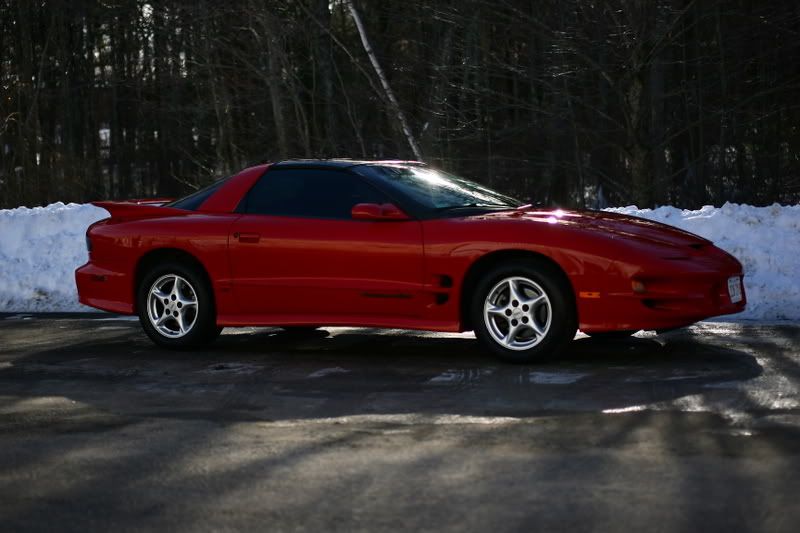Preachers Sheets
New member
Ok, so this past weekend I decided to try to the rotary again. I have only used it 4 times before yesterday in two years.
Products:
• Dewalt rotary
• 3M Waffle polishing pads
• Meguiars buffing pads
• 3M Perfect It-III compound, machine glaze, finishing glaze
The car was an eight year old Firebird with 85,000+ miles, it was pretty beat (cracked, scraped, emblems peeling, dash cracked, doors cracked, stained). I detailed the car inside an auto shop with excellent lighting. Long story short, I spent two hours on the hood alone. Under the garage lighting there were many paint defects that I wasn’t able to completely remove with a rotary, buffing pad and compound, even after two applications (followed the pyramid scheme) followed by the proper weaker polishes. Eventually I got frustrated and decided to just shine up the polished hood and look at it in the sun. Low and behold there wasn’t even a single scratch, swirl or defect. It looked liked something from the “pro before/after� gallery. I took pictures of the hood directly in the sun and I couldn’t find any defects.
I see a lot of people from the “pro� section who have detailed cars as bad as the Firebird I did. Their cars look as good as the Firebird outside but when inspected inside under critical lighting, the paint looks just as good it does under the sun. My question is; is there a limit of correction you can apply to paint before it needs to be wet sanded or your applying time for diminishing results? Was I using too weak of a pad/product? Did I not apply enough pressure?
Some of the good things about the rotary I noticed.
• You learn how to hold and move it pretty quickly.
• With a normal sized pad it’s not that bad with curved panels.
• Despite the damage it may do, with common sense and patience you can remove a great deal of defects without burning the clear.
Some of the bad things I noticed.
• The rotary is a little heavier than the Cyclo but I’ll get used to it.
• Once the pad gets saturated with product it gets jumpy and sticks, I had to use a lot less product and mist the panel.
• I needed to work the product in a lot, to the point where it hazed quickly and left little to no residue as I passed the panel. It made removal a lot easier and left better results.
• The rotary makes a mess, expect to wash the car after (or tape it up).
I don’t know, I had mixed emotions with the machine. Is this something that be more effective with more experience or did I over exaggerate the effectiveness of this machine?
Products:
• Dewalt rotary
• 3M Waffle polishing pads
• Meguiars buffing pads
• 3M Perfect It-III compound, machine glaze, finishing glaze
The car was an eight year old Firebird with 85,000+ miles, it was pretty beat (cracked, scraped, emblems peeling, dash cracked, doors cracked, stained). I detailed the car inside an auto shop with excellent lighting. Long story short, I spent two hours on the hood alone. Under the garage lighting there were many paint defects that I wasn’t able to completely remove with a rotary, buffing pad and compound, even after two applications (followed the pyramid scheme) followed by the proper weaker polishes. Eventually I got frustrated and decided to just shine up the polished hood and look at it in the sun. Low and behold there wasn’t even a single scratch, swirl or defect. It looked liked something from the “pro before/after� gallery. I took pictures of the hood directly in the sun and I couldn’t find any defects.
I see a lot of people from the “pro� section who have detailed cars as bad as the Firebird I did. Their cars look as good as the Firebird outside but when inspected inside under critical lighting, the paint looks just as good it does under the sun. My question is; is there a limit of correction you can apply to paint before it needs to be wet sanded or your applying time for diminishing results? Was I using too weak of a pad/product? Did I not apply enough pressure?
Some of the good things about the rotary I noticed.
• You learn how to hold and move it pretty quickly.
• With a normal sized pad it’s not that bad with curved panels.
• Despite the damage it may do, with common sense and patience you can remove a great deal of defects without burning the clear.
Some of the bad things I noticed.
• The rotary is a little heavier than the Cyclo but I’ll get used to it.
• Once the pad gets saturated with product it gets jumpy and sticks, I had to use a lot less product and mist the panel.
• I needed to work the product in a lot, to the point where it hazed quickly and left little to no residue as I passed the panel. It made removal a lot easier and left better results.
• The rotary makes a mess, expect to wash the car after (or tape it up).
I don’t know, I had mixed emotions with the machine. Is this something that be more effective with more experience or did I over exaggerate the effectiveness of this machine?











